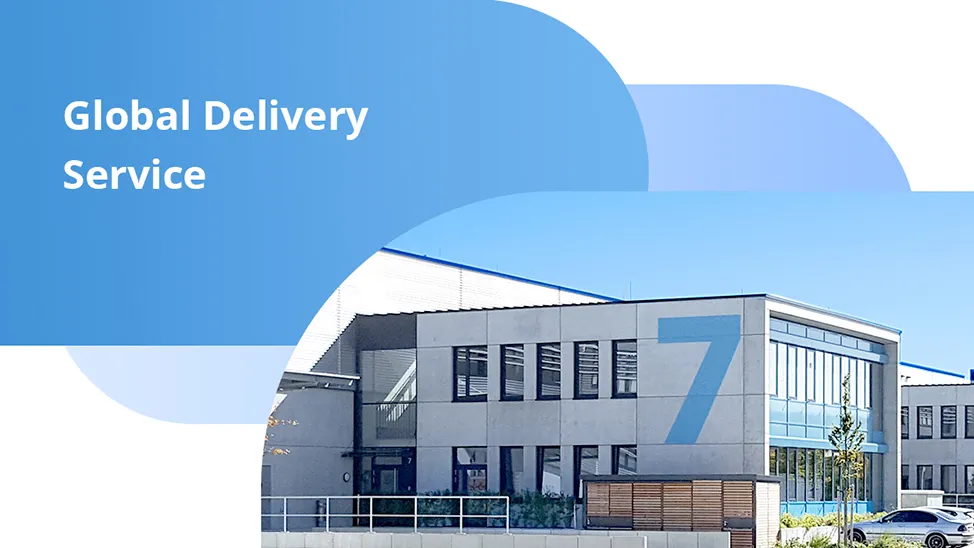Creating A Flexible Network With EVPN-VXLAN
In the modern digital era, traditional VLAN network architectures can no longer meet the increasingly complex demands of network infrastructure. To address these challenges, enterprises need an efficient, flexible, and secure network solution. EVPN-VXLAN enhances agility, security, and scalability in campus and data centre networks by extending Layer 2 connections over existing physical networks. In this article, we will explore the basic concepts, components, and advantages of EVPN-VXLAN and its applications in enterprise networks to help businesses build high-performance network architectures for the future.
What Is EVPN-VXLAN
Ethernet VPN (EVPN) and Virtual Extensible LAN (VXLAN) form a network architecture that extends Layer 2 connections over existing physical networks. This open-standard technology enhances agility, security, and scalability in both campus and data centre networks.
Components of EVPN-VXLAN
EVPN: Acts as an overlay control plane, providing virtual connections between different Layer 2/3 domains over IP or MPLS networks.
VXLAN: A network virtualization overlay protocol that expands Layer 2 network address space from 4,000 to 16 million.
Why Is EVPN-VXLAN Popular?
EVPN-VXLAN addresses the limitations of traditional VLAN-based networks. In campus environments, the rise of BYOD (Bring Your Own Device), workplace mobility, and IoT necessitate finer isolation policies to segregate users, devices, and traffic configurations. In data centres, increasing workloads to support digital transformation demands robust management and security to prevent lateral movement in case of breaches.
Advantages of EVPN-VXLAN
-
Flexibility: Supports multiple protocols and can integrate with other common network services like VPNs, fitting seamlessly into existing networks.
-
Scalability: Allows easy addition of new switches without redesigning the underlying network.
-
Enhanced Security: Provides finer isolation to control traffic between network elements, strengthening security posture and limiting attack scope.
-
Improved Performance and Resilience: Predictable latency between network devices, especially in spine-leaf architectures, ensures that failures in one area don't significantly impact overall performance.
EVPN MPLS VS EVPN VXLAN
In an MPLS-based EVPN deployment, organisations can leverage their existing MPLS infrastructure to distribute Layer 2 and Layer 3 networks across different sites. MPLS is a mature technology that efficiently utilises network resources, supports multicast services, and enables fast convergence. However, it has limitations in complexity, scalability, and flexibility, often requiring specialised skills for deployment and management.
EVPN deployment based on VXLAN is a newer option, using VXLAN encapsulation to transmit EVPN traffic between different sites. VXLAN encapsulation offers scalability, flexibility, and ease of deployment, supporting large-scale networks and dynamic business needs. However, VXLAN encapsulation introduces network overhead, affects performance, and has limited support for traffic engineering and QoS mechanisms.
Q&A About EVPN-VXLAN
Q1: What is the difference between VPLS and EVPN?
A1: EVPN offers higher efficiency, reduced unknown unicast and ARP flooding, support for multipath traffic, distributed Layer 3 gateway, and fast convergence compared to VPLS. It uses VXLAN for transport, eliminating the need for traditional MPLS.
Q2: How does EVPN differ from VPN?
A2: VPNs, primarily used in service provider networks, segment virtual networks using BGP with MPLS as the underlying transport. EVPN provides a more efficient and flexible control mechanism, which is advantageous in data centres and enterprise networks with better scalability and QoS control.
Q3: Where is EVPN used?
Modern data centers commonly use IP Fabric architectures with EVPN-VXLAN. Scalable enterprise networks can utilize EVPN-VXLAN without redesigning infrastructure. Service providers also migrate from VPLS to EVPN for improved efficiency and flexibility.
Q4: How does EVPN-VXLAN work?
A4: EVPN-VXLAN supports flexible topologies like IP Fabric models, ensuring deterministic latency and horizontal scaling at core, aggregation, and access layers. Using IGP (e.g., OSPF or BGP) as the underlying routing protocol, it provides a secure and efficient infrastructure, isolating various applications and services.
What EVPN-VXLAN Solutions Does FS Provide?
FS offers solutions by deploying N5860-48SC, and other access switches. This setup creates a VXLAN EVPN, allowing 1,000-2,000 users per segment to access the network. N5860-48SC supports up to 96K MAC address table entries and uses stacking or M-LAG for enhanced performance and link bandwidth, delivering a highly reliable and high-speed data centre network.

Additionally, the N5860-48SC supports VXLAN, EVPN, OSPF, and BGP functions, addressing network isolation needs due to VLAN resource limitations. VXLAN facilitates large Layer 2 networks, decoupling physical and virtual networks, simplifying network management, and enabling flexible deployment.
Conclusion
By leveraging EVPN-VXLAN technology, businesses can tackle modern network challenges and meet future expansion needs. FS solutions help users build efficient, reliable network architectures, enhancing overall IT infrastructure resilience. For more information, please get in touch with our sales team.
You might be interested in
Email Address

-
PoE vs PoE+ vs PoE++ Switch: How to Choose?
May 30, 2024














